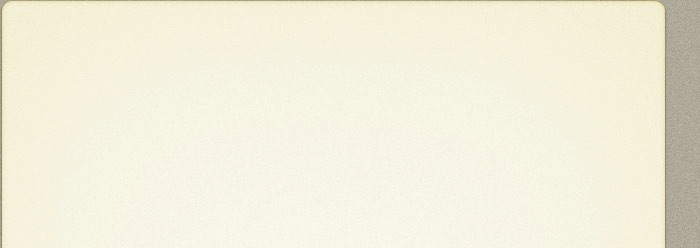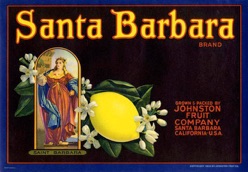Southern Pacific Lines
Coast Line Division
“The Route of the Octopus”

Southern Pacific Lines
Coast Line Division
“The Route of the Octopus”

Sunkist Ads
In February 1952, the California Fruit Growers Exchange officially changed its name to Sunkist Growers, Inc., to associate the brand name with the corporate organization that had made it so famous.
Here are some magazine advertisements for Sunkist oranges:
http://advertisingcliche.blogspot.com/search/label/Sunkist%20Oranges
Bob Chaparro
Citrus Industry Film
Here is a link to a short film from the mid-1950s titled "Citrus - The Golden Fruit". In addition to packing house scenes at about 10:45 into the film you will see railroad scenes showing loading, icing and a fruit block.
Bob Chaparro
Great video. It's also on YouTube where it may be easier to download:
Here's a 2-minute film "Growing Oranges in California 1935". Note box making:
Rob Simpson
References
Citrus Industry Modeling Group
www.citrusmodeling@yahoogroups.com
http://groups.yahoo.com/group/citrusmodeling/
Packing House Advertising
Similar packinghouses all around the area had a big SUNKIST painted across the wall[s], although it was owned by VPOA.
Modeling Citrus Packing House Decals
Lettering & Numbering
Sunkist Decals
Microscale (87-1268)
If building citrus packing houses to be served by PFE reefers you now have decals for these structures. The decal set is called the Sunkist Packing House Signs and Lettering set. The HO stock number is 87-1268. It includes two sheets with one containing the words Sunkist in red/orange and black, oranges, lemons and grapefruit in red/orange, yellow and black and green along with numbers in black for numbering the packing house doors. The second page has words that can be arranged to create many different packing house names. A second set in what I believe is N scale is stock number 60-1268.
Microscale (87-771 & 48-299)
Microscale offers a decal set (87-771) specifically for packinghouses in HO. This is generally appropriate for the mid 1950s and later although the stylized Sunkist logo didn’t come into usage until the late 1960’s. Microscale 87-771 and 48-299 sets do say "1955+" on them. The stylized orange logos would not be appropriate for 1955 layout. The shadowed block lettering, which figured so prominently on packing houses, usually on a dark blue background, was not so recent as seen in older photos.
They are very nice sets, however, most of the Sunkist logos are modern, that is from the 1970s when the current Sunkist logo was created. The National Orange signage is fine but the stylized orange is much later. The Sunkist logo with shadowed block letters came into use in June 1955 and the logo for the 40's and most of the 50's was Sunkist in outline fashion.
Both sheets in each set are shown on Microscale's web site: http://www.microscale.com/ under new releases.There's an instruction sheet included that mentions the Packing House web site and includes several packinghouse photos to show how they were lettered.
Bob Chaparro
Messecar Custom Decals
I have created a custom set of decals for Sunkist Packinghouses—if interested contact me off line.
Clinic by William Messecar
P O Box 7750 Kent, Washington 98042 Santafe-mail@Comcast.net
Box Labels
Box labels are an entire subject of their own, and a number of fine books have been produced to reproduce and discuss the art and design of such labels. Many of these labels were vivid, sometimes featuring scantily-clad women or sports images, and it should be recalled that these were aimed at male wholesale produce buyers, not at housewives in grocery stores.
In the early 1950s, cardboard cartons were just coming into use, and wooden crates remained virtually standard. These containers were sized with two things in mind: the standard sale size for that produce type, and fitting into a standard refrigerator car with minimal or even no dunnage and making a tight fit to ensure no movement during transit. For these reasons, container sizes and proportions varied widely among fruit and vegetable varieties. This is readily seen in a collection of box labels for these products, because normally the label occupied the entire end of a container.
Tony Thompson
References
Many examples of crate labels are shown in the book, Southern Pacific’s Coast Line Pictorial (Signature Press, 2000).
Tony Thompson
I would recommend any of the following books on the subject. All are focused on citrus, mostly oranges.
John Salkin and Laurie Gordon, Orange Crate Art, Warner Books, New York, 1976 (paperback).
Richard H. Barker (editor), Selling the Gold: Citrus Roots . . . Our Legacy, Upland Public Library Foundation, Upland, Calif., 1999 (paperback).
Gordon T. McClelland and Jay T. Last, California Orange Box Labels, Hillcrest Press, Beverly Hills, Calif., 1985 (hardback).
See the website: http://www.cratelabelsonline.com/sunkistorange.jpg
Use the California Fruit Growers Exchange list (Citrus Operation Page) to search for information and photos of the various associations as well as sample crate labels.
Here is a link from the Plan59 website to crate labels: http://www.plan59.com/main.htm
The citrus labels are mixed in with other fruits and vegetables: http://www.boxofapples.com/galleries/gallery_001.htm
Bob Chaparro
Modeling Box Labels
For your modeling, use actual packing labels from the area you model. Of course packing crates are pretty small in HO scale. One can do name changes with Photoshop to suit your layout. A stack of crates with the “right” labels can be waiting on the loading dock.
Tony Thompson http://modelingthesp.blogspot.com
Modeling Waybills with Labels
If you are modeling the citrus industry you can also use the California Fruit Growers Exchange list for waybills and switch lists.
Bob Chaparro




